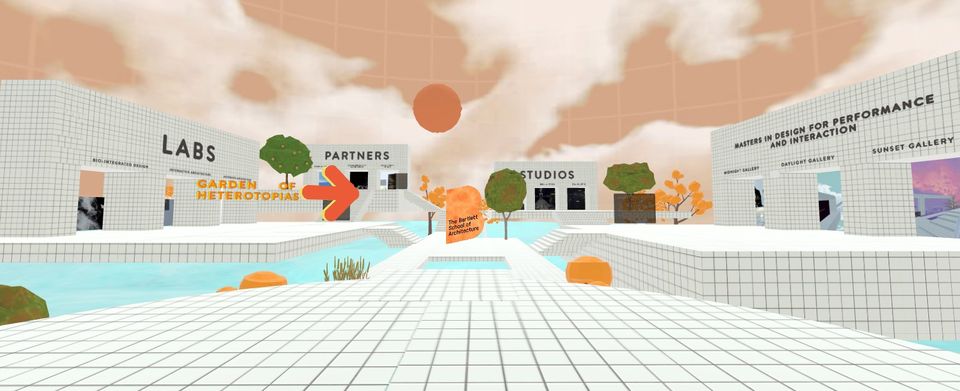Interactive Architecture - Enhancing User Experience With Technology
Interactive architecture is a new way of designing that uses technology and interactive features to make the user's experience better. It can be used for a wide range of things, such as interactive installations, responsive building facades, and immersive environments.
Author:George EvansJul 08, 202536K Shares767.8K Views

Interactive architectureis an innovative approach to design that integrates technology and interactive elements to enhance the user experience.
It encompasses a wide range of applications, from responsive building facades to immersive environments and interactive installations.
With the rapid development of technology, interactive architecture has become increasingly popular in recent years and has the potential to transform the way we design and interact with built environments.
What Is Interactive Architecture?
Interactive architecture is a design approach that integrates technology and interactivity into physical spaces to create an immersive and engaging user experience.
It involves the use of sensors, microcontrollers, and other electronic devices to create responsive and adaptive environments.
Interactive architecture can be applied in various contexts, from public spaces and commercial buildings to museums and exhibitions.
The main goal of interactive architecture is to create environments that are not only functional but also emotionally engaging and responsive to human behavior.
It allows users to interact with the built environment in a meaningful way, making them active participants rather than passive observers.

What is Interactive Architecture?
Benefits Of Interactive Architecture
Interactive architecture offers several benefits that traditional architecture cannot provide. Firstly, it can create a more engaging and immersive user experience, which can lead to increased user satisfaction and better outcomes for businesses and organizations.
Interactive architecture can also be used as a tool for education and communication, allowing users to learn and understand complex concepts in a more engaging and interactive way.
Another significant benefit of interactive architecture is its ability to adapt to changing user needs and preferences.
By using sensors and other electronic devices, interactive architecture can respond to user behavior and adjust the environment accordingly.
This can lead to increased energy efficiency and reduced environmental impact, as the environment is only using resources when they are needed.
What Technologies Are Used In Interactive Architecture?
Interactive architecture often incorporates various technologies to create responsive and dynamic environments. Some of the technologies commonly used in interactive architecture include:
- Sensors: Sensors are used to detect changes in the environment, such as movement, sound, or temperature, and trigger a response in the architecture.
- Actuators: Actuators are devices that can physically move or adjust the architecture in response to changes in the environment.
- Computer vision:Computer vision technology can be used to track movement or gestures and interpret them as commands for the architecture.
- Projection mapping:Projection mapping allows images or video to be projected onto surfaces in the environment, creating an immersive and interactive experience.
- Augmented reality:Augmented reality technology can be used to overlay digital information onto the physical environment, creating a hybrid experience that blurs the line between the real and virtual worlds.
These and other technologies are constantly evolving, offering new possibilities for creating interactive and responsive architecture.
Examples Of Interactive Architecture
There are many examples of interactive architecture around the world, from interactive installations and public spaces to responsive building facades and immersive environments.
One notable example is the Digital Water Pavilion in Spain, which features a responsive water curtain that allows visitors to walk through the space without getting wet.
The water curtain reacts to the movement of visitors, creating a unique and interactive experience.
Another example is the Kinetic Facade at the Al Bahr Towers in Abu Dhabi. This building features a responsive facade that adapts to the sun's position, reducing solar gain and glare while maintaining natural light levels.
The facade consists of 2,000 dynamic elements that open and close according to the sun's position, creating a visually striking and energy-efficient building.
The Future Of Interactive Architecture
Interactive architecture has the potential to revolutionize the way we design and interact with built environments.
As technology continues to advance, we can expect to see even more innovative and creative applications of interactive architecture in the future.
One potential area of development is the use of artificial intelligence and machine learning to create more intelligent and adaptive environments.
This could lead to buildings that can learn from user behavior and adjust to their preferences automatically, creating a more personalized and engaging user experience.
Overall, interactive architecture is an exciting and innovative approach to design that has the potential to create more engaging, adaptive, and sustainable built environments.
As technology continues to evolve, we can expect to see even more creative and innovative applications of interactive architecture in the years to come.
People Also Ask
What Is Interactive Architecture?
Interactive architecture refers to buildings or spaces that use technology to create a dynamic and responsive environment. This technology can include sensors, actuators, and other devices that allow the building to react to changes in the environment or the behavior of its occupants.
What Are The Benefits Of Interactive Architecture?
Interactive architecture can offer a range of benefits, including increased energy efficiency, improved user experience, and enhanced functionality.
By responding to the needs of its users, an interactive building can adapt to changing conditions and provide a more comfortable and efficient environment.
What Are Some Examples Of Interactive Architecture?
Examples of interactive architecture include buildings with responsive facades that adjust to changes in the environment, interactive installations that respond to user input, and smart homes that use sensors and other devices to automate tasks and improve energy efficiency.
What Are Some Challenges In Designing Interactive Architecture?
One of the main challenges in designing interactive architecture is ensuring that the technology is integrated seamlessly into the building's design and function.
This requires a deep understanding of both architecture and technology, as well as collaboration between architects, engineers, and technology experts.
What Is The Future Of Interactive Architecture?
The future of interactive architecture is likely to involve even greater integration of technology into the built environment, with buildings that are more responsive, adaptive, and intelligent.
This could include the use of artificial intelligence, advanced sensors, and other cutting-edge technologies to create buildings that are more sustainable, efficient, and user-friendly.
Final Words
Interactive architecture is a rapidly growing field that blends technology and design to create dynamic and responsive built environments.
It has the potential to revolutionize the way we experience and interact with the spaces around us, by making them more engaging, immersive, and adaptable to our needs.
By integrating sensors, actuators, and other smart technologies into the design process, architects and designers can create structures that can change their form, function, and appearance in real-time, in response to user input or environmental conditions.
As such, interactive architecture represents an exciting and promising area of innovation that will continue to shape the future of architecture and urban design.

George Evans
Author
George Anderson, an exceptional architectural designer, envisions and brings to life structures that transcend the realm of imagination. With an unwavering passion for design and an innate eye for detail, George seamlessly blends form and function, creating immersive spaces that inspire awe.
Driven by a deep appreciation for the interplay of space, light, and materials, George's innovative approach redefines the possibilities of architectural design. His visionary compositions leave an indelible mark, evoking a sense of wonder and transforming the built environment.
George Anderson's transformative designs and unwavering dedication continue to shape the architectural landscape, pushing the boundaries of what is possible and inspiring generations to come.
Latest Articles
Popular Articles